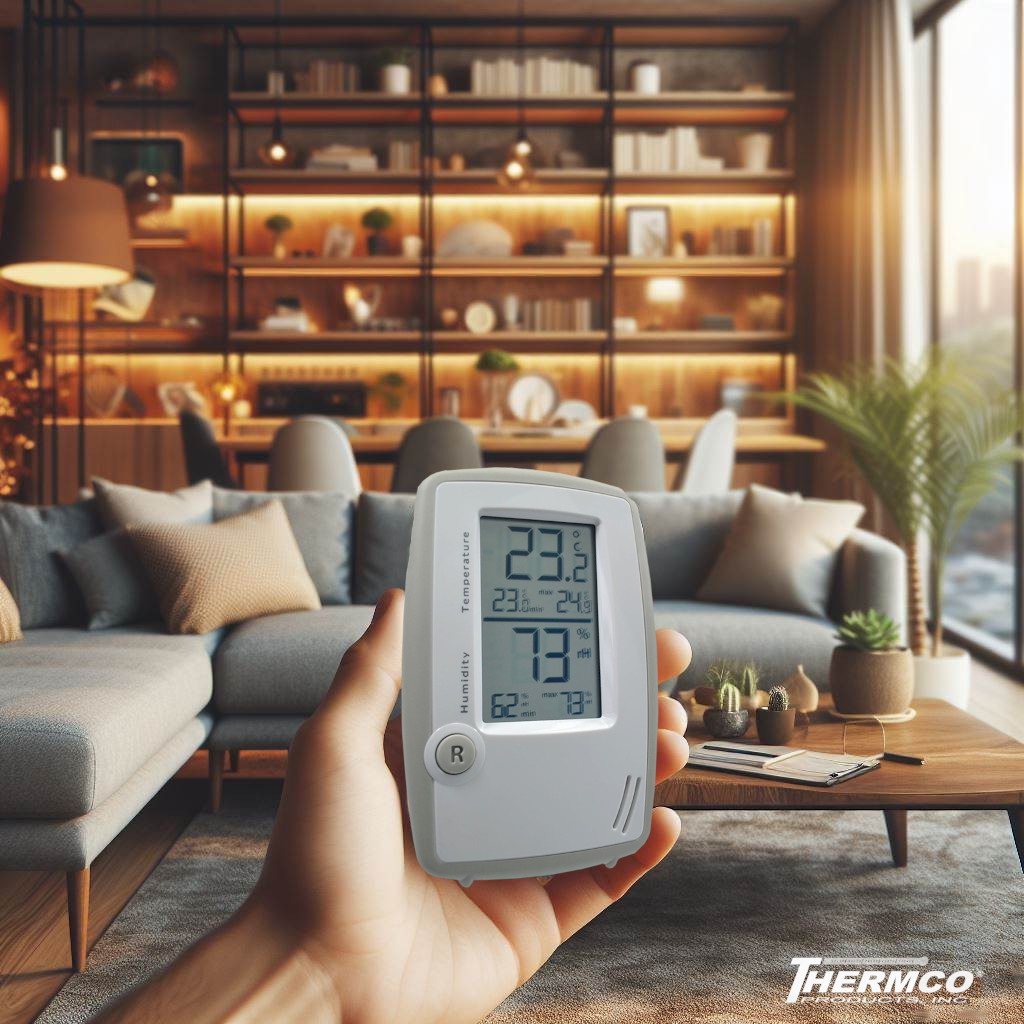A hygrometer is a device that measures the humidity, or the amount of moisture, in the air. Hygrometers play an important role in various aspects of our lives. These include improving measurements for comfort and health to environment preservation and agriculture. In this blog post, we will explain what hygrometers are, why humidity matters, and how hygrometers can help you create and maintain a balanced environment.
What is a Hygrometer?
A hygrometer is a device similar to a thermometer, but one that measures the level of water vapor in the air (humidity) rather than temperature. There are different types of hygrometers, each with its own advantages and disadvantages, but they all share the same purpose: to tell you how humid the air is.
Why is Measuring Humidity Important?
Humidity affects many aspects of our daily lives, and it can have both positive and negative effects, depending on the situation. Too much or too little humidity can cause problems such as:
Comfort
High humidity can make the air feel hot and sticky, making it difficult to find relief even in the shade or indoors with air conditioning. On the other hand, low humidity can make the air feel dry and cold, leading to discomfort and potential health issues. Maintaining a comfortable humidity level is essential for a pleasant living environment.
Health
High humidity can promote the growth of mold, bacteria, and viruses, which can cause respiratory problems and infections. Prolonged exposure to environments with high humidity can exacerbate allergies and asthma symptoms. In contrast, low humidity can dry out your skin, eyes, and mucous membranes, increasing the risk of irritation, nosebleeds, and respiratory infections. It is important to maintain a balanced humidity level to protect your health and well-being.
Making sure humidity levels are nominal is especially important for sensitive environments such as clean rooms, pharmacy storage, reagents, surgery/OR, and anywhere medical equipment and pharmaceutical drugs are stored.
Preservation
Humidity can affect the quality and durability of various items, such as musical instruments, artwork, and wine collections. High humidity can cause warping, swelling, and corrosion of wooden instruments, as well as mold growth on paintings and other art pieces. Conversely, low humidity can cause cracking, shrinking, and brittleness in wooden instruments and damage delicate paintings. Proper humidity control is vital for preserving and maintaining the value of these items.
Agriculture
Humidity plays a crucial role in the growth and development of plants, including cannabis, as they need a certain amount of moisture to survive and thrive. High humidity can cause fungal diseases and pest infestations in plants, while low humidity can lead to wilting, dehydration, and reduced crop yield. Maintaining optimal humidity levels is essential for successful plant growth and ensuring a healthy harvest.
Types of Hygrometers
There are many types of hygrometers available, each with its own characteristics and applications. Some of the most common types are:
Mechanical Hygrometer
This is a traditional type of hygrometer. A mechanical hydrometer uses a natural or synthetic material, such as hair or fiber, to measure humidity. The material changes its length or shape according to the moisture level in the air. This moves a needle on a dial to indicate the relative humidity.
Electronic Hygrometer
This is a modern type of hygrometer that uses a sensor, such as a capacitive or resistive sensor, to measure humidity. The sensor changes its electrical properties according to the moisture level in the air. This converts to a digital signal displayed on an LCD screen. This type of hygrometer is accurate, precise, and fast, but may require calibration and maintenance.
Psychrometer
A psychrometer is a type of hygrometer that uses two thermometers, one with a wet bulb and one with a dry bulb, to measure humidity. The wet bulb is covered with a moist cloth, which cools down due to the evaporation of water. The dry bulb measures the ambient temperature. The difference between the two temperatures is used to calculate the relative humidity, using a formula or a chart.
Dew Point Hygrometer
Dew point hygrometers measure the temperature at which the air becomes saturated with water vapor, also known as the dew point. The dew point is related to the relative humidity, as the higher the dew point, the higher the humidity. Dew point hygrometers use a mirror or a metal surface, which is cooled down until condensation forms on the surface. Then, the temperature of the surface is measured. This is very accurate and sensitive, and it may require a power source and a cooling system.
Conclusion
Hygrometers are devices that measure the humidity, or the amount of moisture, in the air. They are useful for various purposes, such as comfort, health, preservation, and agriculture. By using hygrometers, you can monitor and control the humidity levels in different environments and achieve a balanced atmosphere.

